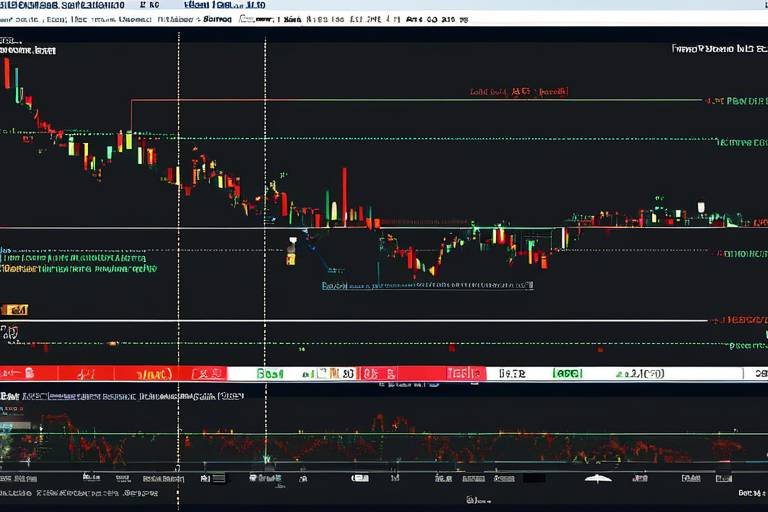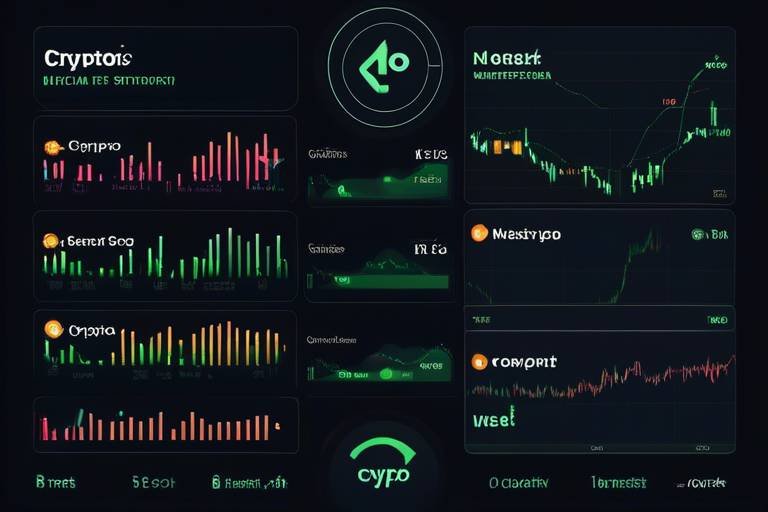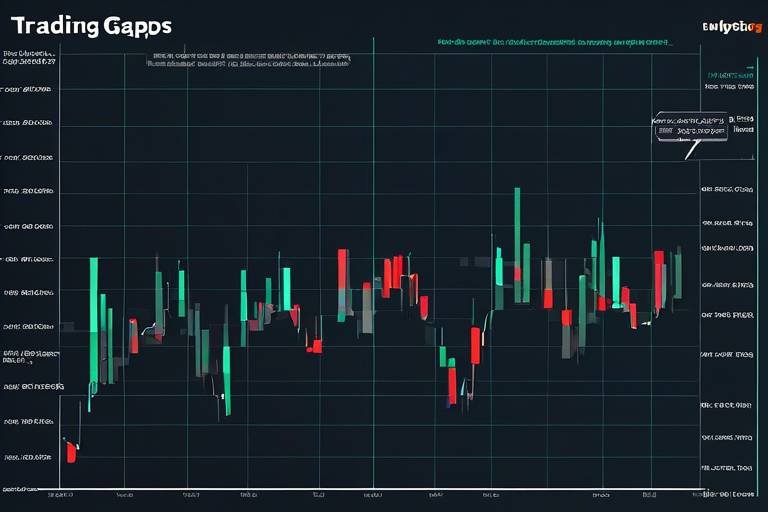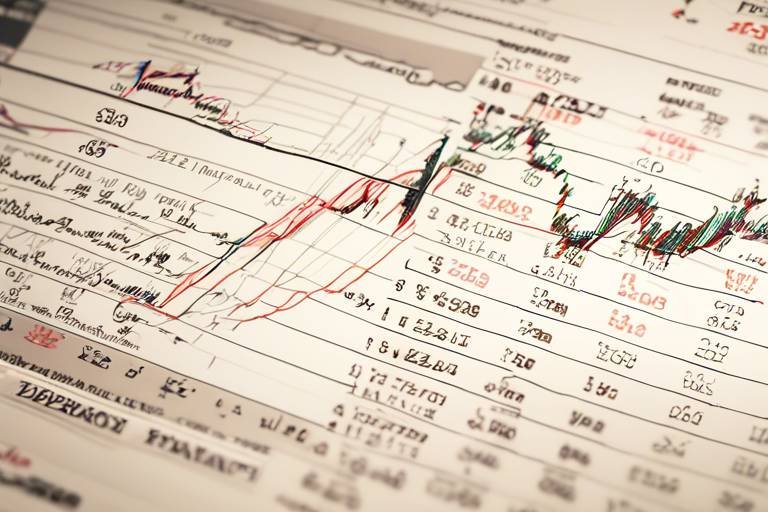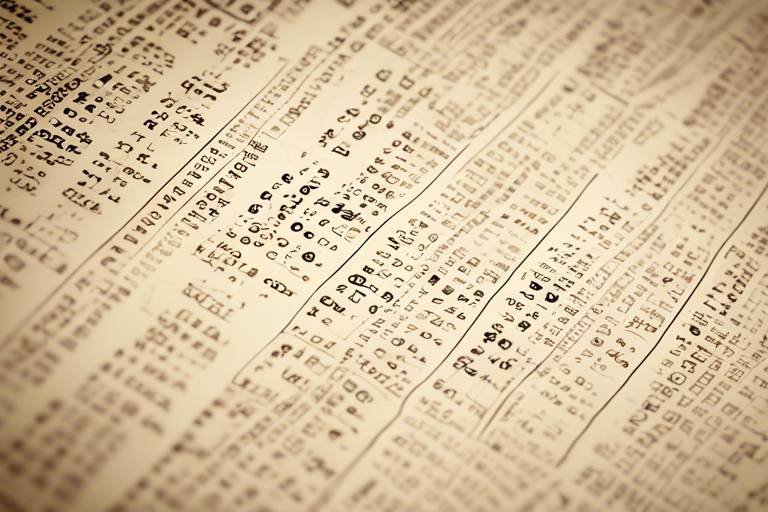How to Use Relative Strength Index (RSI) for Trading Signals
The world of trading can often feel like a wild rollercoaster ride, with prices soaring and plummeting at breakneck speeds. In this exhilarating environment, having the right tools at your disposal is essential to making informed decisions. One such tool that stands out is the Relative Strength Index (RSI). This powerful momentum oscillator not only helps traders gauge the speed and change of price movements but also serves as a compass to navigate through the tumultuous waters of the market. In this article, we’ll dive deep into the intricacies of RSI, exploring its calculation, interpretation, and practical applications, so you can harness its potential to enhance your trading strategies.
The Relative Strength Index operates on a simple yet profound principle: it measures the momentum of price movements. Imagine you’re trying to predict the next big wave while surfing. You wouldn’t just look at the water; you’d pay attention to the wind, the clouds, and the currents, right? Similarly, the RSI provides traders with insights into whether an asset is overbought or oversold, allowing them to make more strategic decisions. The RSI ranges from 0 to 100, with values above 70 typically indicating that an asset is overbought, while values below 30 suggest it is oversold. Understanding these fundamental concepts is crucial as they lay the groundwork for effective trading.
Calculating the RSI might sound daunting at first, but once you break it down, it becomes a straightforward process. The RSI is derived from the average gains and average losses over a specified period, often set to 14 days. To start, you’ll need to gather your price data and calculate the average gains and losses. This process involves a few steps, but don’t worry; we’ll walk you through it!
The formula for RSI is:
RSI 100 - (100 / (1 + RS))
Where RS (Relative Strength) is the average gain of up periods during the specified period divided by the average loss of down periods. Breaking it down further:
- Average Gain: The average of all gains over the specified period.
- Average Loss: The average of all losses over the same period.
By understanding these components, you can grasp how the RSI reflects market momentum and sentiment.
To compute the average gain and loss, start by calculating the daily price changes. For each day, if the price has increased, record the gain; if it has decreased, record the loss. After gathering this data for your chosen period, you can find the average gain and loss by summing the gains and losses separately and then dividing by the number of days in the period. For example, if over 14 days, the total gains sum up to 70 and the total losses to 30, your calculations would look like this:
| Total Gains | Total Losses | Average Gain | Average Loss |
|---|---|---|---|
| 70 | 30 | 5 | 2.14 |
This data will feed into your RSI formula, setting the stage for the final calculation.
Once you’ve determined your average gains and losses, plugging them into the RSI formula is the final step. Continuing from our previous example, if you found the average gain to be 5 and the average loss to be 2.14, your RS would be:
RS Average Gain / Average Loss 5 / 2.14 2.34
Now, substitute this value back into the RSI formula:
RSI 100 - (100 / (1 + 2.34)) 100 - (100 / 3.34) 70.04
Voila! You’ve successfully calculated the RSI value. This number can now guide your trading decisions.
Interpreting RSI values is where the magic happens. A high RSI indicates that an asset might be overbought, suggesting it could be time to sell. Conversely, a low RSI indicates oversold conditions, hinting at a potential buying opportunity. Think of it like a traffic light: green means go (buy), yellow means proceed with caution (watch for changes), and red means stop (sell). Understanding these signals can significantly enhance your trading strategy.
Incorporating the RSI into your trading strategies can be a game-changer. From identifying entry and exit points to confirming trends, the RSI can provide valuable insights. One popular strategy involves looking for RSI divergence, which occurs when the price action contradicts the RSI movement. For example, if prices are making new highs but the RSI is failing to do so, this could indicate a potential reversal.
Identifying RSI divergence is like spotting a storm brewing on the horizon. It’s crucial to recognize these signals early. When the price peaks or troughs fail to align with the RSI, it often hints at weakening momentum. Traders can use this information to adjust their strategies accordingly, potentially avoiding losses.
To enhance your trading outcomes, consider combining the RSI with other technical indicators. For instance, using moving averages alongside the RSI can provide a clearer picture of market trends. This combination helps confirm signals, reducing the likelihood of false positives. Remember, the more data you have, the better your chances of making informed decisions!
What is a good RSI value to look for when trading? Generally, an RSI above 70 indicates overbought conditions, while below 30 suggests oversold conditions.
Can RSI be used for all types of trading? Yes, RSI can be applied to various trading styles, including day trading, swing trading, and long-term investing.
How often should I calculate RSI? It’s recommended to calculate RSI regularly, especially when entering or exiting trades, to stay updated on market conditions.

Understanding RSI Basics
The Relative Strength Index (RSI) is not just another technical indicator; it's a powerful momentum oscillator that traders rely on to gauge the strength of price movements. Think of it as a speedometer for the market, measuring how fast prices are moving and in what direction. By analyzing the RSI, traders can identify potential reversal points and make informed decisions about when to enter or exit trades. This makes it a crucial tool in any trader's toolkit.
At its core, the RSI operates on a scale of 0 to 100, with readings above 70 typically indicating that an asset is overbought, while readings below 30 suggest that it is oversold. These thresholds can act as warning signs, alerting traders to potential price corrections. But why is this important? Well, understanding whether an asset is overbought or oversold can significantly enhance your trading strategy, allowing you to capitalize on market inefficiencies.
Moreover, the RSI is calculated based on the average gains and losses of an asset over a specified period, usually 14 days. This time frame can be adjusted depending on the trader's style and the volatility of the asset. The significance of the RSI lies in its ability to smooth out price fluctuations, providing a clearer picture of market momentum. In essence, it helps traders avoid getting caught up in the noise of daily price movements.
To better illustrate the importance of RSI, consider this: imagine you’re on a road trip. Your speedometer shows you’re going 80 mph, but the speed limit is 55 mph. You’d likely take your foot off the gas, right? The same principle applies to trading. When the RSI indicates that an asset is moving too quickly (overbought), it's a signal to reassess your strategy and possibly take profits. Conversely, if the RSI shows that an asset is moving too slowly (oversold), this could be a cue to consider entering a position.
In summary, the RSI is a vital indicator that helps traders understand market momentum and make informed decisions. By grasping the basics of the RSI, you can enhance your trading strategy and potentially improve your success rate. Remember, like any tool, it’s most effective when used in conjunction with other indicators and market analysis techniques.

Calculating RSI
The Relative Strength Index (RSI) is a powerful tool for traders, but to harness its full potential, you need to understand how to calculate it accurately. The calculation of RSI is not just a simple task; it requires a systematic approach to ensure that you are getting the most reliable signals. Let's dive into the calculation process step-by-step, so you can confidently use this indicator in your trading arsenal.
To calculate the RSI, you need to follow a specific formula which incorporates the average gains and average losses over a defined period. The standard period used is typically 14 days, but this can be adjusted depending on your trading strategy. The formula for calculating the RSI is as follows:
RSI 100 - (100 / (1 + RS))
Where RS (Relative Strength) is the average of 'n' days' up closes divided by the average of 'n' days' down closes. Let’s break this down further to make it easier to grasp.
Understanding the RSI formula involves grasping its components: average gains and average losses. To compute these averages, you will need to follow these steps:
First, you need to determine the average gain and average loss over your chosen period. Here’s how you can compute them:
- Calculate the gain or loss for each day over the specified period.
- For days where the price increased, take the difference as the gain; for days where the price decreased, take the difference as the loss.
- Sum the gains and losses separately, then divide each by the number of days in your period (e.g., 14 for a standard RSI).
This will give you the average gain and average loss, which are crucial for determining the RS. For example, if your average gain over 14 days is 1.5 and your average loss is 0.5, your RS would be:
RS Average Gain / Average Loss RS 1.5 / 0.5 3
Once you have calculated the average gains and losses, the final step is to substitute these values into the RSI formula. Continuing with our example, you would plug in the RS value you calculated:
RSI 100 - (100 / (1 + 3)) RSI 100 - (100 / 4) RSI 100 - 25 RSI 75
This final value indicates that the asset is potentially overbought, as values above 70 typically signal overbought conditions. Conversely, values below 30 indicate oversold conditions. Understanding how to calculate RSI not only empowers you as a trader but also enhances your ability to make informed decisions based on market movements.

Formula Breakdown
The Relative Strength Index (RSI) formula is a fundamental aspect that every trader should grasp to effectively utilize this powerful tool. At its core, the RSI is calculated using the following formula:
RSI 100 - (100 / (1 + RS))
Here, RS stands for the average of gains and losses over a specified period, typically 14 days. Understanding the components of this formula is crucial for interpreting RSI values correctly. Let's break it down further:
| Component | Description |
|---|---|
| Average Gain | This is the average of all the gains during the specified period. A gain is defined as any positive price movement. |
| Average Loss | This is the average of all the losses during the same period. A loss is any negative price movement. |
| Relative Strength (RS) | This is calculated by dividing the average gain by the average loss (RS Average Gain / Average Loss). |
To compute the average gain and average loss, you would typically take the following steps:
- Identify all the price movements over the specified period.
- Separate the gains from the losses.
- Calculate the average gain by summing all gains and dividing by the number of periods.
- Calculate the average loss by summing all losses and dividing by the number of periods.
Once you have the average gain and average loss, calculating the final RSI value becomes a straightforward process. Plugging these values into the RSI formula will yield a number between 0 and 100. An RSI value above 70 typically indicates an overbought condition, while a value below 30 suggests an oversold condition. Understanding these thresholds is essential for making informed trading decisions.
In summary, mastering the formula and its components is a stepping stone to effectively using the RSI in your trading strategy. By grasping the calculations behind the RSI, traders can better interpret market movements and make more informed decisions. It's like having a compass in the vast ocean of trading; it guides you through the waves of price fluctuations.

Average Gain and Loss
The calculation of Average Gain and Average Loss is a crucial step in determining the Relative Strength Index (RSI). To put it simply, these averages help traders understand how much a stock's price has moved up or down over a specific period, typically 14 days. This timeframe is commonly used because it strikes a balance between sensitivity and reliability. But how do we actually calculate these averages? Let's break it down.
First, to find the Average Gain, you need to look at the price movements over the chosen period and identify all the days where the price increased. For each of those days, you calculate the gain (the difference between the closing price of the current day and the previous day). Once you have all the gains, you sum them up and divide by the number of days in the period. If there are days where the price didn't increase, those are counted as zero gains. The formula looks something like this:
Average Gain (Sum of Gains over the period) / Number of Days
On the flip side, the Average Loss is calculated in a similar manner. You look at the days where the price decreased, calculate the loss for each of those days, and then average them out just like you did with the gains. Importantly, if there are days without a loss, those are counted as zero losses. The formula for Average Loss is:
Average Loss (Sum of Losses over the period) / Number of Days
To illustrate this with a quick example, imagine a stock's closing prices over a 14-day period. Let's say the stock had the following gains and losses:
| Day | Closing Price | Gain/Loss |
|---|---|---|
| 1 | $50 | - |
| 2 | $52 | $2 (Gain) |
| 3 | $51 | -$1 (Loss) |
| 4 | $53 | $2 (Gain) |
| 5 | $54 | $1 (Gain) |
| 6 | $52 | -$2 (Loss) |
| 7 | $55 | $3 (Gain) |
| 8 | $56 | $1 (Gain) |
| 9 | $54 | -$2 (Loss) |
| 10 | $57 | $3 (Gain) |
| 11 | $58 | $1 (Gain) |
| 12 | $59 | $1 (Gain) |
| 13 | $57 | -$2 (Loss) |
| 14 | $60 | $3 (Gain) |
From this example, you would sum the gains and losses over the 14 days. Let's say the total gains equal $15 and the total losses equal $10. The Average Gain would be $15/14, and the Average Loss would be $10/14. These averages are then used in the final RSI calculation, providing a clearer picture of the stock's momentum.
Understanding how to calculate Average Gain and Loss is essential for any trader looking to leverage the RSI effectively. It’s like having the right ingredients to bake a cake; without them, the final product just won't taste right!
- What is the best period to use for calculating RSI? While 14 days is standard, some traders prefer shorter or longer periods depending on their trading strategy.
- Can RSI be used for all types of assets? Yes, RSI can be applied to stocks, forex, commodities, and cryptocurrencies.
- What does it mean if the RSI is above 70? An RSI above 70 typically indicates that an asset is overbought, which may suggest a price correction is coming.
- How can I use RSI in conjunction with other indicators? Combining RSI with indicators like moving averages or MACD can provide additional confirmation for trading signals.

Final RSI Value
Once you have successfully calculated the average gains and losses over your chosen period, the next step is to derive the final Relative Strength Index (RSI) value. This value is pivotal as it provides a numerical representation of momentum, helping traders gauge the strength of a particular asset's price movement. The RSI is calculated using the following formula:
RSI 100 - (100 / (1 + RS))
In this formula, RS stands for the Relative Strength, which is determined by dividing the average gain by the average loss. Let’s break this down further:
- Average Gain: This is the mean of all the gains over the specified period.
- Average Loss: This is the mean of all the losses over the same period.
To calculate the final RSI value, follow these steps:
- Calculate the average gain and average loss.
- Determine the Relative Strength (RS) by dividing the average gain by the average loss.
- Substitute the RS value into the RSI formula to get your final RSI value.
For example, if your average gain is 5 and your average loss is 3, your RS would be:
RS Average Gain / Average Loss 5 / 3 1.67
Plugging this into the RSI formula gives:
RSI 100 - (100 / (1 + 1.67)) 100 - (100 / 2.67) ≈ 62.49
This final RSI value of approximately 62.49 tells you that the asset is in a relatively strong position, but it’s essential to interpret this value in the context of market conditions. Generally, an RSI above 70 indicates that an asset may be overbought, while an RSI below 30 suggests it may be oversold. However, these thresholds can vary depending on the market and the asset being analyzed.
Understanding how to calculate the final RSI value is crucial for traders who want to make informed decisions based on market momentum. It’s not just about the number; it’s about what the number signifies in terms of potential price movements. By mastering this calculation, you can enhance your trading strategy and improve your chances of success in the markets.
- What is the ideal period for calculating RSI? Generally, a 14-day period is standard, but traders can adjust this based on their strategies.
- Can RSI be used for all types of trading? Yes, RSI can be applied in various trading styles, including day trading, swing trading, and long-term investing.
- What should I do if the RSI is constantly in the overbought or oversold zone? This could indicate a strong trend; consider using additional indicators to confirm your trading decisions.

Interpreting RSI Values
The Relative Strength Index (RSI) is more than just a number; it's a powerful indicator that can help traders make informed decisions. Understanding how to interpret RSI values is crucial for successful trading. Typically, RSI values range from 0 to 100, and they provide insights into market momentum. When traders look at these values, they are primarily interested in identifying overbought and oversold conditions, which can signal potential reversals in price movement.
Generally, an RSI value above 70 indicates that an asset is overbought. This means that the price has risen significantly and may be due for a pullback. Conversely, an RSI value below 30 suggests that an asset is oversold, indicating that the price has dropped significantly and might be poised for a rebound. These thresholds are not set in stone; they can vary depending on the market and the asset being analyzed. Traders often adjust these levels based on their trading strategies and the specific characteristics of the asset.
Another critical aspect of interpreting RSI is its ability to signal potential trend reversals through divergence. For instance, if the price of an asset is making new highs while the RSI is failing to reach new highs, this could indicate a weakening momentum and a potential reversal. On the other hand, if the price is making new lows but the RSI is showing higher lows, it may suggest that the asset is oversold and could bounce back. This phenomenon is known as RSI divergence and can be a powerful signal for traders.
To better visualize these concepts, consider the following table that summarizes RSI interpretation:
| RSI Value | Market Condition | Implication |
|---|---|---|
| 0 - 30 | Oversold | Potential buying opportunity |
| 30 - 70 | Neutral | Market consolidation |
| 70 - 100 | Overbought | Potential selling opportunity |
In summary, interpreting RSI values involves looking at the numbers, understanding market conditions, and recognizing divergence. This multifaceted approach allows traders to make more informed decisions, whether they are looking to enter a trade or exit one. Remember, while RSI is a valuable tool, it should not be used in isolation. Always consider other indicators and market factors to enhance your trading strategy.
- What is the best RSI setting for trading?
While the standard setting is 14 periods, some traders prefer shorter or longer periods based on their trading style and the asset's volatility. - Can RSI be used in all markets?
Yes, RSI can be applied to various markets, including stocks, forex, and cryptocurrencies, making it a versatile tool for traders. - How often should I check RSI values?
It depends on your trading strategy. Day traders may check RSI values multiple times a day, while long-term traders may look at them weekly or monthly.

Using RSI in Trading Strategies
The Relative Strength Index (RSI) is not just a standalone indicator; it can be a powerful ally in your trading arsenal when used correctly. By incorporating RSI into your trading strategies, you can make more informed decisions, potentially increasing your chances of success. Imagine having a trusty compass in the unpredictable seas of the stock market; that’s what RSI can be for you! Let’s dive into how you can effectively utilize RSI in various trading strategies.
One of the most popular ways to use RSI is by identifying overbought and oversold conditions. When the RSI value climbs above 70, it typically indicates that an asset is overbought, meaning it might be due for a price correction. Conversely, when it dips below 30, it suggests that the asset is oversold and could be primed for a rebound. Understanding these thresholds can help you time your entry and exit points more effectively.
Additionally, you can enhance your trading strategy by looking for RSI divergence. Divergence occurs when the price of an asset moves in the opposite direction of the RSI. For instance, if the price is making new highs while the RSI is making lower highs, this could signal a potential reversal. This phenomenon can be a red flag, alerting you to reconsider your position. Here’s how you can identify RSI divergence:
- Regular Divergence: Occurs when the price makes a new high (or low) while the RSI does not. This is typically a sign of weakening momentum.
- Hidden Divergence: Happens when the price makes a lower low (or higher high) while the RSI makes a higher low (or lower high). This often indicates a continuation of the current trend.
Combining RSI with other technical indicators can further refine your trading strategy. For instance, using RSI in conjunction with moving averages can provide a clearer picture of market trends. When the RSI is above 50 and the price is above the moving average, it may suggest a bullish trend. Conversely, if the RSI is below 50 and the price is below the moving average, it could indicate a bearish trend. This combination helps in confirming signals and reducing false positives.
Another effective strategy is to implement RSI with candlestick patterns. Candlestick patterns can provide additional context to RSI readings. For example, if you see a bullish engulfing pattern at the same time the RSI is below 30, this could serve as a strong buy signal. Conversely, a bearish engulfing pattern while the RSI is above 70 may indicate a good time to sell. By layering these indicators, you can create a more robust trading strategy.
Finally, it’s essential to remember that no indicator is foolproof. The RSI, like any tool, has its limitations and should not be used in isolation. It’s crucial to consider the broader market context, including news events and overall market sentiment. By integrating RSI into a well-rounded trading strategy that includes risk management and diversification, you can navigate the complexities of trading with greater confidence.
1. What is the best time frame to use RSI?
The best time frame for RSI depends on your trading style. Day traders might prefer shorter time frames (like 5 or 15 minutes), while swing traders could opt for daily or weekly charts. The key is to match the RSI with your trading strategy.
2. Can RSI be used for all types of assets?
Yes, RSI can be applied to any asset, including stocks, forex, and cryptocurrencies. However, it’s vital to understand the specific characteristics of each market.
3. How can I avoid false signals with RSI?
To minimize false signals, consider combining RSI with other indicators or tools, such as moving averages or trend lines. This multi-faceted approach can help confirm signals and improve your trading accuracy.

RSI Divergence
The concept of is a powerful tool in the arsenal of any trader looking to enhance their market analysis. Essentially, RSI divergence occurs when the price of an asset moves in one direction while the RSI indicator moves in the opposite direction. This phenomenon can serve as a crucial signal, indicating potential reversals in price trends. For instance, if prices are making higher highs but the RSI is making lower highs, this may suggest that the momentum behind the price increase is weakening, potentially signaling a reversal.
To better understand this, think of RSI divergence as a warning light on your dashboard. Just as you wouldn't ignore a blinking light that indicates low oil pressure, you shouldn't overlook divergence signals, as they can provide critical insights into market sentiment. Traders often categorize divergence into two types: regular divergence and hidden divergence. Regular divergence signals potential trend reversals, while hidden divergence can indicate trend continuation.
Here’s a quick breakdown of how to identify these divergences:
- Regular Divergence: This occurs when the price makes a new high or low while the RSI fails to do the same. For example, if the price creates a new high, but the RSI forms a lower high, this signals a potential bearish reversal.
- Hidden Divergence: This happens when the price makes a higher low or lower high while the RSI makes a lower low or higher high, suggesting that the existing trend may continue. For instance, if the price makes a higher low and the RSI makes a lower low, it may indicate bullish strength.
Traders often look for these divergences to make informed decisions about entering or exiting trades. However, it’s essential to remember that divergence signals should not be used in isolation. They are most effective when combined with other technical indicators or patterns. For instance, if you spot a regular divergence and also see a candlestick pattern that supports a bearish reversal, the likelihood of a price change increases.
In summary, RSI divergence is a valuable aspect of technical analysis that can alert traders to potential market reversals or continuations. By keeping an eye on these signals, traders can make more informed decisions, ultimately enhancing their trading strategies. Remember, just like in life, sometimes the most crucial signals come from the unexpected places, and in trading, the RSI divergence could be one of those unexpected gems.

Combining RSI with Other Indicators
When it comes to trading, the old saying "two heads are better than one" rings especially true. This is where the concept of combining the Relative Strength Index (RSI) with other technical indicators comes into play. By doing so, traders can gain a more comprehensive understanding of market conditions and make better-informed decisions. Think of it like having a multi-tool in your trading toolkit; each tool has its unique function, but together they can create a powerful strategy.
One of the most popular combinations is using RSI alongside Moving Averages (MA). Moving Averages smooth out price data to help identify trends over a specific period, while RSI provides insight into momentum. When the RSI indicates an overbought condition and the price is above a moving average, it might signal a potential reversal. Conversely, if the RSI shows an oversold condition while the price is below the moving average, it could indicate a buying opportunity. This interplay can be particularly useful in trending markets, as it helps traders confirm signals before making a move.
Another effective pairing is RSI with the MACD (Moving Average Convergence Divergence). The MACD is a trend-following momentum indicator that shows the relationship between two moving averages of a security’s price. When both indicators align—say, when the MACD crosses above its signal line while the RSI is rising—traders can view this as a strong bullish signal. Conversely, if the MACD crosses below its signal line while the RSI is falling, it could indicate a bearish trend. This combination provides a double-check mechanism, reducing the chances of false signals.
For those who favor volatility, combining RSI with Bollinger Bands can be particularly enlightening. Bollinger Bands consist of a middle band (the moving average) and two outer bands that represent standard deviations away from the average. When prices touch the upper band and the RSI is above 70, it can indicate an overbought condition, signaling a potential reversal. On the flip side, if prices hit the lower band while the RSI is below 30, it suggests an oversold condition, which may present a buying opportunity. This combination allows traders to visualize price volatility while also considering momentum.
Lastly, it’s essential to remember that no indicator is foolproof. While combining RSI with other tools can enhance decision-making, it’s crucial to consider the overall market context and other influencing factors. Always backtest your strategies and remain adaptable. After all, trading is as much an art as it is a science, and the best traders are those who can blend various techniques to suit their unique style.
- What is the best indicator to use with RSI? While there is no definitive answer, many traders find success using RSI in conjunction with Moving Averages, MACD, or Bollinger Bands.
- Can RSI work in all market conditions? RSI can be effective in trending markets, but it may produce false signals in choppy or sideways markets. It's essential to use it alongside other indicators for confirmation.
- How do I know when to enter or exit a trade using RSI? Look for overbought (above 70) or oversold (below 30) conditions, and consider confirming these signals with other indicators or price action.
Frequently Asked Questions
- What is the Relative Strength Index (RSI)?
The Relative Strength Index (RSI) is a momentum oscillator that measures the speed and change of price movements in the market. It helps traders identify potential overbought or oversold conditions, providing critical insights for making informed trading decisions.
- How is the RSI calculated?
RSI is calculated using a specific formula that considers the average gains and average losses over a defined period, usually 14 days. The formula is: RSI 100 - (100 / (1 + RS)), where RS (Relative Strength) is the average gain of up periods divided by the average loss of down periods.
- What do overbought and oversold RSI values indicate?
RSI values range from 0 to 100. Typically, an RSI above 70 indicates that a security may be overbought, suggesting a potential price correction. Conversely, an RSI below 30 indicates that a security may be oversold, which could signal a potential price increase.
- Can RSI be used in different trading strategies?
Absolutely! RSI can be effectively incorporated into various trading strategies. It’s commonly used to identify divergence, where the price movement contradicts the RSI movement, or combined with other indicators for a more comprehensive market analysis.
- How do I identify RSI divergence?
To identify RSI divergence, look for instances where the price makes a new high or low that is not confirmed by the RSI. For example, if the price hits a new high but the RSI fails to do so, it could indicate a potential reversal in the trend.
- Is RSI effective when used with other indicators?
Yes, combining RSI with other technical indicators can enhance trading decisions. For instance, using RSI alongside moving averages or MACD can provide a clearer picture of market trends and help confirm potential entry and exit points.

